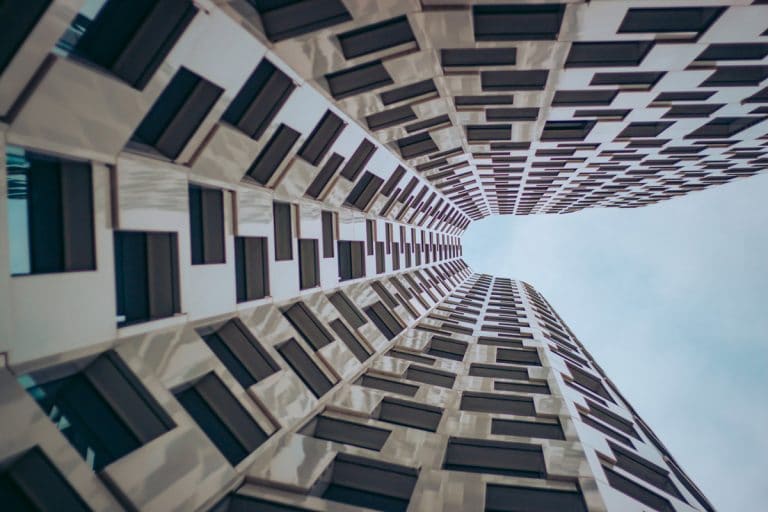Racism is in the air, literally: how segregation affects the weather

Racism is in the air—quite literally. TikTok user @haute.hort proved this to be the case in a viral video in which he describes how neighbourhoods impacted by redlining (the systematic refusal of services based on factors like race) have higher temperatures than other neighbourhoods.
@haute.hort #stitch with @zacharyloft #climatejustice is integral to #racialjustice #climatechange #redlining #urbanforest #horticulture #plants #trees #fyp
♬ original sound - Gardener Bryan
The TikToker, named Bryan, first posted the video as a part of a trend on the video-sharing app where users share statistics that “live in their heads rent free.” In it, Bryan explains that neighbourhoods that were previously redlined in the 1900s are today 5 to 12 degrees hotter in the summertime than their non-redlined counterparts.
This is because redlined neighbourhoods have fewer trees, which help reduce heat by providing shade and moisture to the surrounding air through evaporative cooling. But what exactly is redlining?
What is redlining?
In 1933, faced with a housing shortage, the US federal government began a programme explicitly designed to increase—and segregate—America’s housing stock. According to NPR, the housing programmes begun under the New Deal were equivalent to a “state-sponsored system of segregation.”
The government’s efforts were “primarily designed to provide housing to white, middle-class, lower-middle-class families,” explains Richard Rothstein, author of The Color of Law: A Forgotten History of How Our Government Segregated America. African-Americans and other people of colour were left out of the new suburban communities and pushed instead into urban housing projects.
The Federal Housing Administration (FHA), which was established in 1934, furthered the segregation efforts by refusing to insure mortgages in and near African-American neighbourhoods—a policy known as redlining. The FHA’s justification was that if African-Americans bought homes in these suburbs, or even if they bought homes near these suburbs, the property values of the homes they were insuring (meaning the white homes they were insuring) would decline. And therefore their loans would be at risk.
As expected, these decades-old housing policies have had a lasting effect on American society. “If we want greater equality in this society, if we want a lowering of the hostility between police and young African-American men, we need to take steps to desegregate,” says Rothstein.
The effects of historical housing policies on resident exposure to intra-urban heat
The information that Bryan highlighted in his TikTok video had in fact been proved in January 2020 by a team of researchers who studied 108 US urban areas and found out that yes, the formerly redlined neighbourhoods of nearly every city studied were hotter than the non-redlined neighbourhoods, some by nearly 13 degrees.
In other words, Rothstein had a point; discriminatory, race-based housing practices put in place nearly a century ago still had repercussions on those same neighbourhoods today. Nearly 90 years after those maps were created, redlined neighbourhoods are hotter than the highest-rated neighbourhoods by an average of almost 5 degrees, according to the research from Portland State University, the Science Museum of Virginia and Virginia Commonwealth University.
“It was very surprising when we saw that it was a pattern that we were seeing consistently across the country,” said Vivek Shandas, a professor of urban studies and planning at Portland State University, who co-authored the study when speaking to NPR.
The injustice doesn’t stop there: that extra heat can have dangerous and sometimes deadly health consequences. Extreme heat kills more Americans every year than any other weather-related disaster, and as climate change progresses, heatwaves are growing in intensity and frequency too.
In Baltimore, NPR and the Howard Center found dramatic increases in the rates of emergency calls during dangerous heat waves, as low-income patients in the city’s hotspots visited the hospital more often than low-income patients in cooler areas.
Cities, in general, tend to be hotter than their rural surroundings—the way they’re built often creates what is known as an ‘urban heat island’. That’s mostly due to the fact that cities have more pavement and concrete, which absorb heat and release it slowly. They also tend to have fewer trees, which cool the air and provide shade. Cities are hotter, but any green space and concrete within them aren’t distributed evenly across these urban areas, which can create micro heat islands within a city.
Looking at the neighbourhoods with hotter temperatures than others, the formerly redlined neighbourhoods statistically have about half as many trees on average today as the highest-rated predominantly white, and wealthier neighbourhoods on those maps.
The results of these studies confirm what has been in talks for years: our cities were designed by people who knew exactly what they were doing. And evidently, not everybody’s best interests were held in mind when plans for cities and communities were made. What now? As Rothstein says, “You can’t undo the damage. You need explicit policy, race-based policy. You need affirmative action in housing.”





